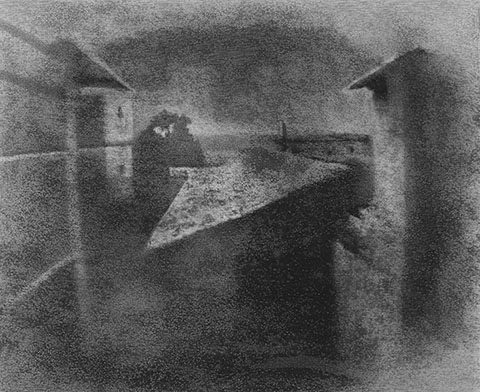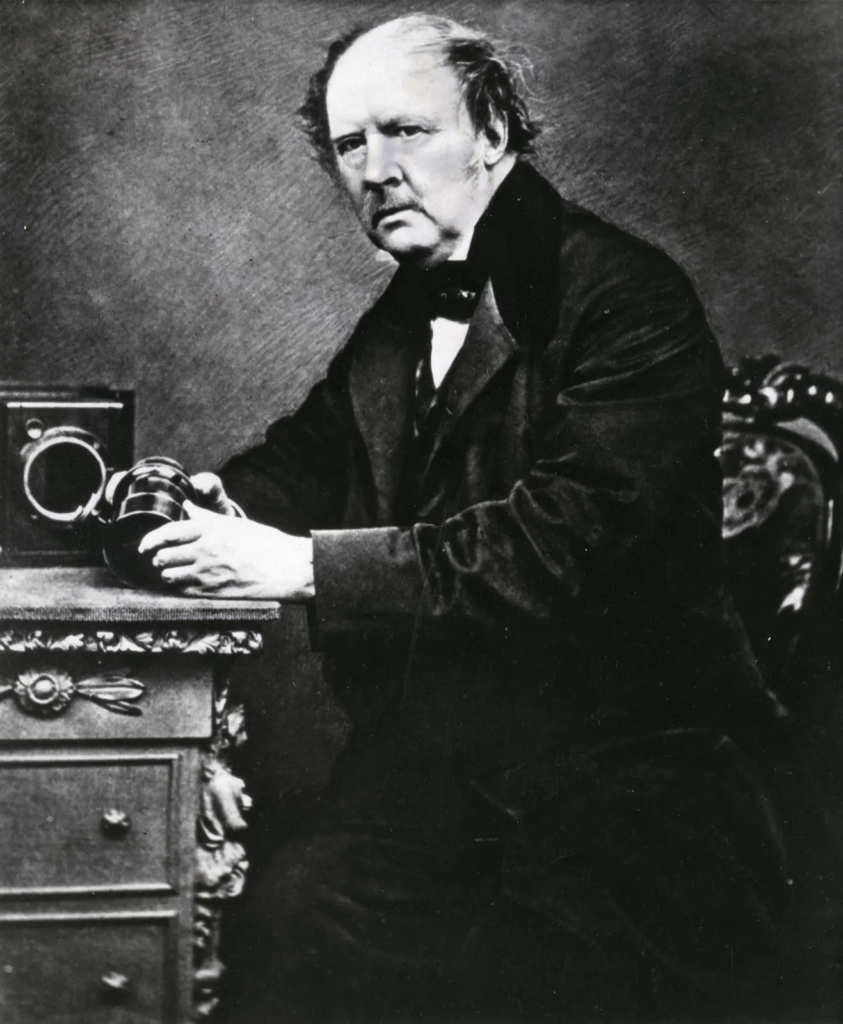- Henry Mullins & Carte-de-Visit
Camera Obscura & pinhole Photography
A camera obscura (camera obscuras; from Latin camera obscūra ‘dark chamber’) is the natural occurrence where in a blacked out room with only a pinhole of natural light, the outside view reflects inside and upside down – like a projected image. The physics behind it is, the rays of light travel in a straight line and change when reflected and partly absorbed by an object. Similar to how, our eyes observe the world upside down but our brain flips it the right way round for us to see it how we do. Camera obscuras with a lens in the opening have been used since the 16th century. They then became popular ways to draw and paint. In the first half of the 19th century, this was developed to be the photographic camera.

Nicephore Niepce & Heliography
The term, heliography, derives from helios (Greek), meaning “sun”, and graphein, “writing”). It is the photographic process invented, and named by Joseph Nicephore Niepce around 1822 which he used to make the earliest known surviving photograph from nature, View from the Window at Le Gras (1826 or 1827). This method consisted of dissolving light-sensitive bitumen in oil of lavender and applying a thin coat over a polished pewter plate. He inserted the plate into a camera obscura and positioned it near a window. After it had been sat, exposed to sunlight for days, the plate yielded an impression of the courtyard, outbuildings, and trees outside.

Louis Daguerre & Daguerreotype
Louis Daguerre was a French artist and photographer who became known for his invention of the daguerreotype. This is a process of photography which is done with a silver-plated copper plate that had to be cleaned and polished until it looked like a mirror. After that, the plate was sensitized in a closed box over iodine up until it took on a yellow-rose appearance. The plate, held in a lightproof holder, was then transferred to the camera. After exposure to light, the plate was developed over hot mercury until an image appeared. To fix the image, the plate was immersed in a solution of sodium thiosulfate or salt and then toned with gold chloride.


Henry Fox Talbot & Calotype
Henry Fox Talbot invented the calotype in the 19th century, this way of photographing images is done by Iodising a sheet of writing paper by applying solutions of silver nitrate and potassium iodide to the paper’s surface under candlelight before washing and drying. Then, Sensitise the same surface using a “gallo-nitrate of silver” solution. You would then dry the paper and load it into a camera obscura, exposing it to light. After, remove the paper and brush it with the same sensitising solution to develop the image. Lastly, rinse the negative with water, wash it with a solution of potassium bromide, and rinse it again before laying it out to dry.


Robert Cornelius & self-portraiture
In 1839, Robert Cornelius used makeshift camera, with a lens made from an opera glass to take the earliest extant self-portrait, daguerreotype photograph. He had decided that the daylight was adequate to expose the prepared metal plate within the camera and take a photograph of himself. To do this, it required him posing for 10-15 minutes without moving.

Julia Margaret Cameron & Pictorialism
Julia Margaret Cameron was an English photographer who’s main focus was portraits in the 19th century. She is known for her soft-focus close-ups of famous Victorians as well as her illustrative images which depicted characters of Christianity, mythology and literature. The start of her photography journey was when she was 48, after her daughter gave her a sliding-box camera.
The term pictorialism is an approach to photography that emphasizes beauty of subject matter, tonality, and composition rather than the documentation of reality, which is what Cameron’s images are.

Henry Mullins & Carte-de-Visite
The term, ‘Carte de visite’ translates from the French as ‘visiting card’ or ‘calling card’. These were album prints which were usually portraits and were then mounted on thick card to stop the image being creased. Henry Mullins was the most prolific Jersey Photographer in the 19th century. He is known for his portrait photographs of islanders between 1848 and 1873, in his studio in the Royal Square, St. Helier.

